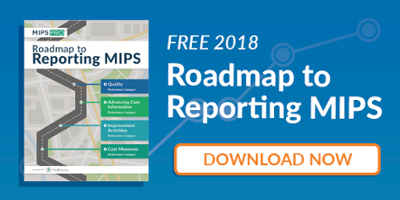Look, we understand, we really do. MACRA is frustrating for doctors who want to spend more time talking to patients than checking boxes, and it’s often hard to recognize what, if anything, its requirements are actually doing to move practices toward value-based care. So of course it’s tempting to believe all those rumors (you know, the ones that have been flying around since the law was passed in 2015) about how MACRA and MIPS are on their way out, how CMS will be repealing the law any minute, how maybe it is an option to cover your ears and whistle until it goes away.
But we’ve been paying close attention to the shifting landscape of CMS policy since we released MIPSPRO in 2009, and in our expert opinion, the law isn’t going anywhere any time soon. Here are three reasons why.
1. MACRA passed with a bipartisan majority.
In one form of the rumor of the death of MACRA, many people speculated that the current presidential administration would be conservative enough to deregulate as much as possible, and that this wave of deregulation would surely include MACRA and MIPS. But it bears repeating that the bill passed through the house 392-37, and the senate 92-8. That’s especially impressive for a time in history where Congress displays almost no bipartisanship in any area, and a clue that they would stand by this law even in a conservative administration—as they have so far.
2. MIPS participation may increase as ACO participants abandon two sided risk.
If you're keeping up with the Healthmonix Advisor, you might already know that CMS made significant changes to the Medicare Shared Savings Program (MSSP) in late 2018 with “Pathways to Success,” a modified set of participation options for MSSP ACOs that no longer include an “upside-only” risk model. Instead, ACOs are now required to select one of two tracks, both of which ultimately include some downside risk.
You might also know that, likely as a result of these changes, 13% of Medicare’s accountable care organizations (ACOs) left the program between 2018 and 2019, and 26% of ACOs that reached the end of their three-year agreement opted to not renew it at the end of 2018.
As this and other AAPMs continue to push participants toward two sided risk, we suspect that MIPS participation may actually increase. ACO participants who are dropping out to avoid the burden of two sided risk may then become MIPS eligible, further increasing the necessity for MIPS as two sided risk adoption moves slower than anticipated.
3. The recommendation to repeal hasn’t been acted on.
But wait, you might protest, wasn’t there an official recommendation to repeal MIPS? So it’s dying after all, right?
It is true that in early 2018, the Medicare Payment Advisory Commission (MedPAC), which advises Congress on issues affecting Medicare program administration, voted 14 to 2 to replace MIPS with a new approach called the Voluntary Value Program (VVP). MedPAC analysts believe that MIPS is not structured to achieve the policy goals it is designed to achieve, and expressed concern that the measures used for it and similar value-based programs have not been proven to correlate to high-value care.
However, MedPAC only makes recommendations, which CMS and Congress do not necessarily have to act on. And so far, if the most recent proposed and final rules are any indication, it seems that these recommendations have not gained enough momentum to seriously impact the law—much less to kill it entirely.
And a deeper investigation into the details of the actual MedPAC recommendation reveals several reasons why even members of the MedPAC board itself worried it wouldn’t work as a sweeping replacement for current law. Although MedPAC proposed an alternative policy approach with the VVP, there was significant debate over whether this was a viable replacement, or whether simply repealing the standing law would be better.
As of now this recommendation has not been acted on by CMS, and we believe it will not be any time soon—not without an adequate replacement, and not at a time like this, when clinicians are just starting to get more comfortable with the requirements under current law and would essentially have to start all over.
So if you’ve been crossing your fingers that procrastination will pay off, it’s time to face the music. MIPS is here to stay, at least for now. If you want to end up ahead of your peers, if you want to be rewarded for the value your organization provides instead of forfeiting your share of the pie, your best move is to get on board as soon as possible, and set yourself up for success while others remain distracted by the rumors.
If you have questions about what this might mean for your organization, don’t hesitate to reach out! You can schedule a meeting with our team of experts here. Or, click to find out more about MIPSPRO, our user-centric, expert-backed MIPS reporting solution.


